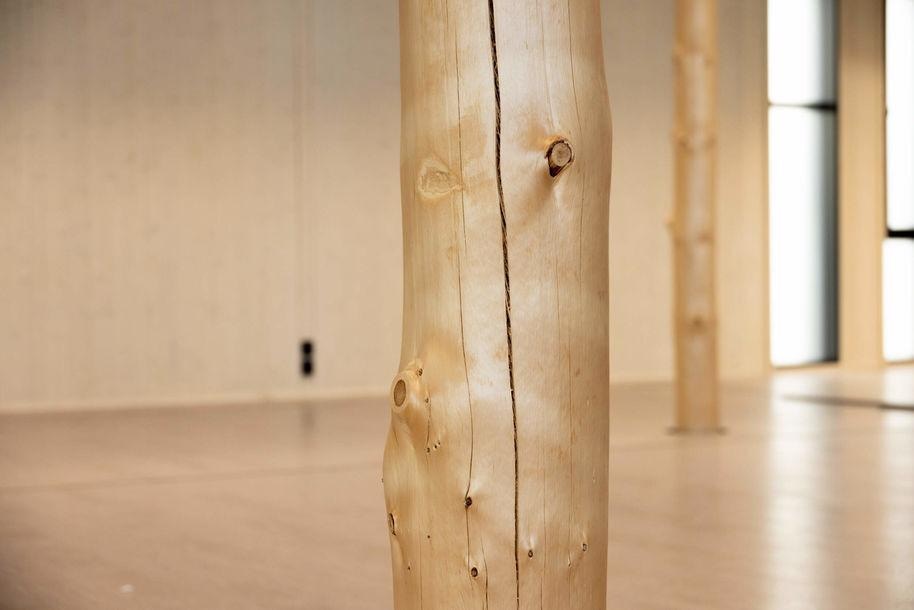The conflict in Ukraine and the European sanctions imposed on Russia, as a response, have had a significant impact on energy and commodity prices. The confluence of supply unpredictability, high energy costs and growing material costs have only highlighted the urgent need to embrace sustainable, locally accessible alternatives like wood.

Image Credit: Mikko Raskinen/Aalto University.
Construction utilizing wood rather than steel and concrete would aid Europe not just in addressing urgent issues but also in improving its long-term prospects.
Steel prices skyrocketed after Russia invaded Ukraine, and they have stayed high while the conflict drags on. Steel is currently 25-30% more expensive than earlier this year, depending on the precise variety.
Supply concerns and high prices will probably prevail since Russia and Ukraine are two of the top steel exporters in the world. Steel-dependent industries are in desperate need of a replacement, and sustainable materials like wood might help fill that void.
Finland’s construction industry is already experiencing scarcity and the threat of bankruptcy, but researchers in the forested Nordic country have devised a solution that might benefit Finland and Europe as a whole.
The technology and expertise to create structures with less than eight storeys out of wood are available now. Contractors have continued to employ steel and concrete, according to Junnila, due to the commercial risks involved in moving to new technology.
What’s needed is an ecosystem where companies in the supply chain see the business benefit of switching from concrete and steel to wood. They know how to do it, but so far the costs have been relatively low and making the change has been too much of a business risk because there’s reliable demand for concrete apartment buildings. If the price stays high, whether because of the war or other things, then there will almost automatically be a switch to constructing wooden residential high-rises.
Seppo Junnila, Professor, Aalto University
Junnila added, “Wood is the only short-term solution, because new solutions with steel or cement would take 10 to 20 years to make it to market. We’re lucky in Finland because we made the decision to promote wooden construction about five years ago. New legislation was introduced that made wooden construction more competitive.”
Junnila believes that wooden structures will outperform steel or concrete under the new regulation, which demands an evaluation of greenhouse gas emissions throughout the whole lifespan of new buildings.
The Finnish government has also set a goal of employing wood in 45% of public buildings by 2025, a threefold increase from 2019. While Finland pioneered this approach many years ago, a similar alternative is now open to other European countries.
Junnila further stated, “Even at the European scale, it’s a feasible strategy, and it greatly increases a nation’s resilience. It’s also the only short-term solution, because new solutions with steel or cement would take 10 to 20 years to make it to market.”
Wood is frequently available locally or regionally, and it requires less energy to manufacture than steel or concrete, lowering the demand for fossil fuels. Wooden construction would support Europe’s efforts to reduce its reliance on Russian energy and resources.
Wooden structures would cut carbon emissions and boost carbon storage, in addition to lowering steel and fuel requirements.
Building with wood creates 20-30% less greenhouse gas emissions than steel and concrete buildings. On top of that, half of wood is carbon, so wooden buildings provide long-term carbon storage.
Ali Amiri, Postdoctoral Researcher, Aalto University
According to the group’s analysis, utilizing wood to construct 80% of new residential structures in Europe would absorb 55 million tons of CO2, which is over half of the cement industry’s yearly emissions.
Junnila concluded, “We already know that we need a more sustainable, long-term solution, but tradition and history have prevented that-path dependency has locked us into existing technologies. We need to make changes in construction, energy, and other areas, and now is the perfect time for it because there’s an extra external pressure to make the change.”